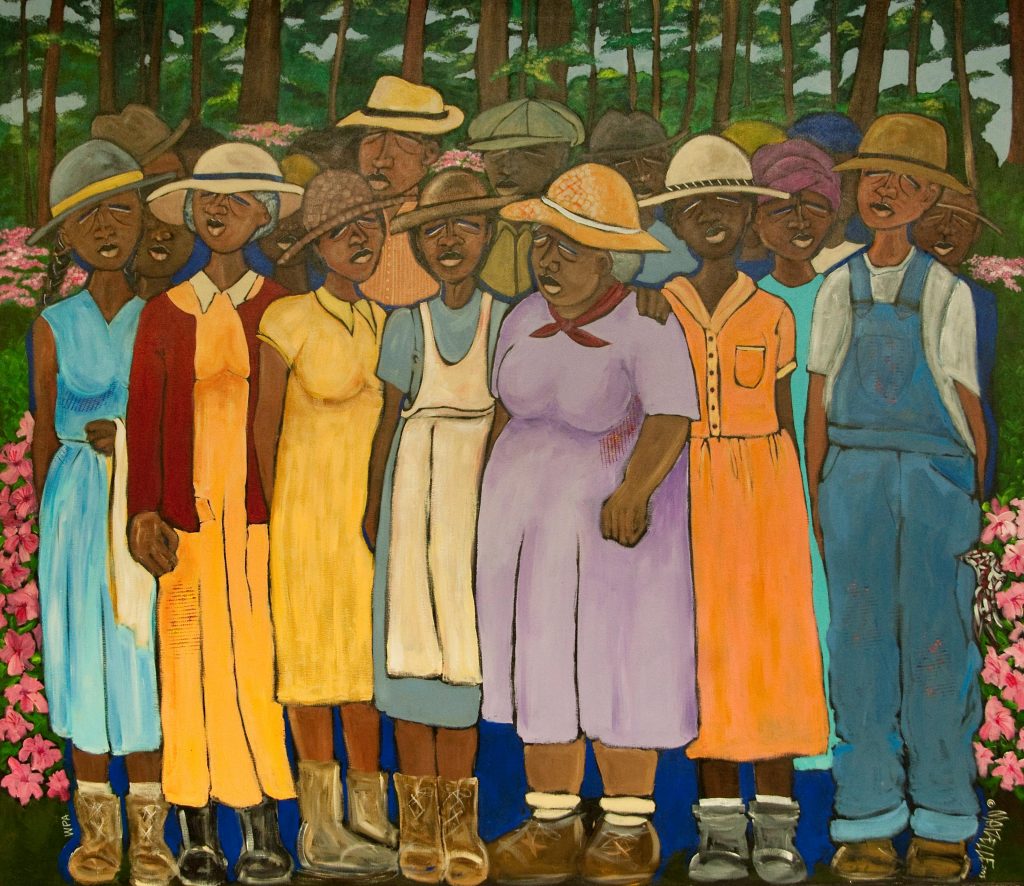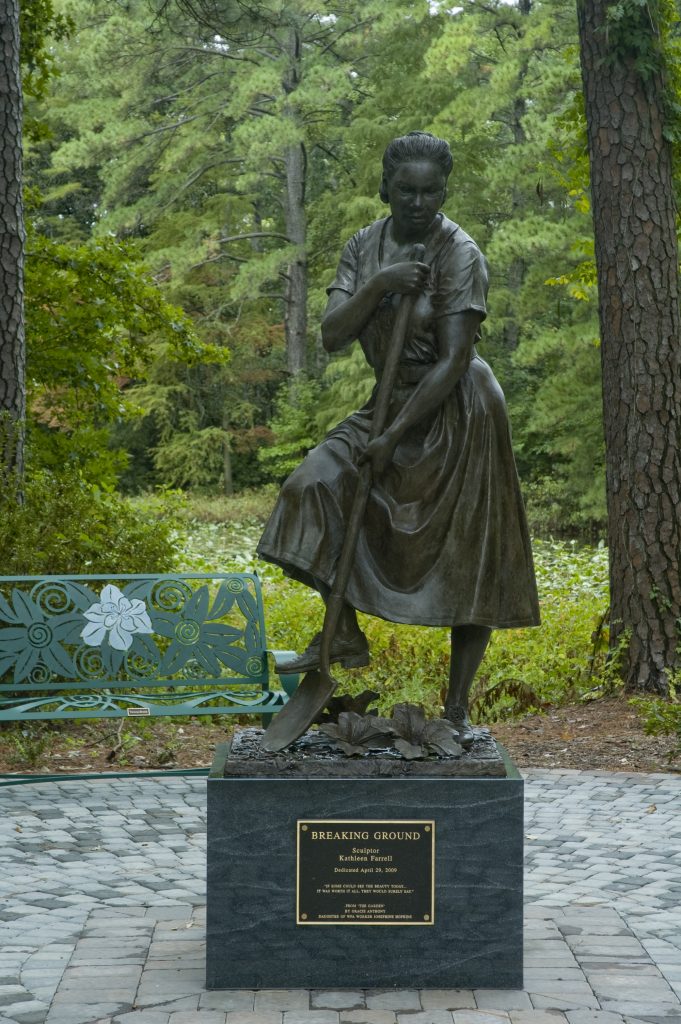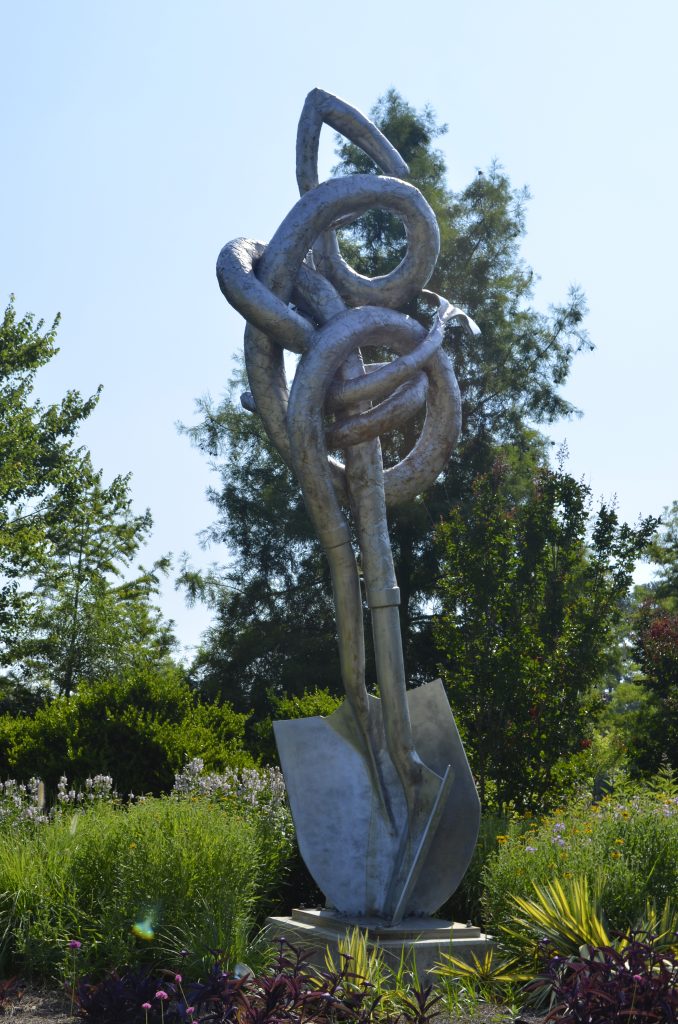Celebrating the WPA Original Gardeners
Black History Month
Celebrating Black History Month and the contributions of 200 African American women and 20 African American men. NBG now acknowledges their excellence, resilience, and legacy of hard work year round. Fitting, since the original gardeners worked year round in sweltering heat, cold winters, and frightening conditions. I am lucky to have arrived at the garden at a time when the WPA Heritage Garden is alive and well, there are two sculptures, and a beautiful painting that give credit to and help tell the origin story of NBG, formerly Norfolk Azalea Garden. This was not always so. There was a time not too long ago when we were blind to, or ignorant of the history of this beautiful place. When the story was untold. As I walk the grounds today, admiring the snowy egrets, herons, and plants just bursting forth new life under a light and steady sprinkling of February rain, my thoughts turn to the WPA workers. How can I honor them? I set to work researching and was drawn towards first person accounts of Mrs. Elizabeth Ferguson and Dr. Martha McClenny Williams.
What was going on during that time?
Everything in context. The year was 1938. Orson Welles frightened many listeners with “War of the Worlds”, radios were becoming more popular than newspapers, FDR was president and the economic downturn was everywhere you looked. There was little to no work to be found. [Source: http://www.thepeoplehistory.com/1938.html]
Economic Crises
“Norfolk was in the worst situation like the rest of the country. Many people were standing in lines for relief and relief didn’t always go around. And relief was only 10.00 a month” explains Dr. Martha McClenny Williams in a Tidewater Waves interview. [Source: https://www.youtube.com/watch?v=8MAmPFanyMo]
It was city manager Thomas P. Thompson who had the idea to develop a piece of land. Thompson noted that Norfolk’s climate was uniquely suited to azaleas and he believed in creating a garden that would rival those found in Charleston, SC, which even during the depression drew tourists in to their city. But who built that garden? And who brought the story of the original gardeners to light?
According to her own account, Dr. Martha McClenny Williams, author of WPA Original Gardeners, was asked to serve on the Norfolk Botanical Garden Board beginning in 2003 for 2 three year terms. A group of middle school students came to the garden because they had just formed a new club “Future Problem Solvers of America”. They had to find a local organization that had a problem they could solve. It was a group of about 15 students.They wanted to help because Hurricane Isabel had just hit hard – about 300 trees had fallen down and they wanted to help with that, but they were too young to do that type of work. A second alternative was helping with increasing the diversity at the garden. As they began to search the history they found that 220 African American men and women were the original gardeners and that they were asked to clear the land and build an azalea garden. The students were amazed when they found out and they wanted to begin to tell this story because no one had heard anything about it! And so the students advertised to find out if any gardeners were still living and they did find one original gardener at that time, in 2004. She was 80 years old and had not been back to the garden since she left in 1942. [Source: https://www.youtube.com/watch?v=8MAmPFanyMo]

In September of 1938 the workers were issued their humble tools and set to work. Mary Elizabeth Ferguson, one of the original gardeners the students found, said that the work was indeed scary. Snakes, bugs, and many other unfortunate surprises laid in wait in the swampy land. She remembered carrying water to the workers for a while before she was transferred to the garden. She found that women were doing the majority of the planting “. . .Told me to pick up a pickaxe and a rake. I didn’t even have a saw and I didn’t weigh barely 110 pounds. It was mainly women doing work.” She responds to her interviewer in a clip found here. Many people have said that the original gardeners were building a dream. When asked if it felt that way at the time Mary Elizabeth Ferguson responded that no, it did not. “I had to survive and I had children and my mind was on my children.” [Source: https://www.youtube.com/watch?v=3Z1zvewy5pk].
The only tools issued were wheelbarrows, pick axes, spades and buckets. Ladies were placed three to a tree, put a rope on the tree and began sawing. The original gardeners worked year round. They wanted to do anything they could to help their families survive. When they finished they had cleared 75 acres of land. From a dense swamp to flowers blooming, they had not had a vacation. They worked every day year round in terrible conditions. They wrapped their legs sometimes in the winter with rags. In one account, Mr. Matthew Austin and his brother had to wrap their mother’s legs in the morning – she was just frozen – and then in the afternoon they had a fire and unwrapped her legs each day. When he came to a board meeting in 2003 he said “You really don’t know the history of the garden.” When he finished telling about his mother and the struggle that she and the other women had, and that they had not had any recognition, he said, “You just don’t know I’ve been trying to get some recognition for these ladies.” When he had finished telling his story there was not a dry eye in the room. [Source: https://www.youtube.com/watch?v=8MAmPFanyMo]
Why Women?
Photographs found at Slover Library and other images highlight the women’s working attire – dresses. People then and now wanted to know why were women assigned this job? According to Dr. Martha McClenny, “There was another lady from Durham, NC and her school only went to the 7th grade. So her father sent her to Norfolk so she could get an education. She was educated at the first African American High School in Norfolk which was St. Joseph’s Catholic School. One woman was even the first Queen and Valedictorian of her class. So it’s not true (when you ask why did they pick these women?) it’s not true that they didn’t have any education, they had all levels of education. But they could not find the jobs because when the market crashed it was a 25% unemployment rate. . .
It’s important to note that many African Americans in Norfolk had their own shops on Church Street. There were 25 lawyers, about 30 doctors, and all levels of professional people. There was even a black bank, but all of that crashed and ended, most of it in the 30’s. (Women were hired because funding was limited and it was thought that money could be used more wisely this way.) During the 30’s African American men and women had a history of living on farms and many of them had moved from farming areas to Norfolk to better themselves and they were doing better – until the economic downturn. They didn’t like the work, but they did it because it put food on the table.” [Source: https://www.youtube.com/watch?v=8MAmPFanyMo]

Community Protest
Community members went to the City and demanded to know why women were being hired for this work. They even went to Richmond, VA to the WPA office, but the gardeners continued working. They worked until funds ran out in 1942. By that time they had transformed murky swamplands into a lasting legacy of beauty. The original gardeners built 12 miles of trails, planted many azaleas and rhododendrons and all kinds of camellias and shrubs. Once the gates closed behind these men and women in 1942 could they return to the garden? Or was all that beauty that they had created off limits because of segregation? Segregation did not change until the Civil Rights Act of 1964 and the Voting Rights Act of 1965. [Source: https://www.history.com/topics/black-history/civil-rights-act].
Let’s Recap
June 30, 1930 Works Progress Administration (WPA) awarded a grant of $76,278 to begin the project of what was then known as Norfolk Azalea Gardens, today NBG.
- 200 African American women
- 20 African American men
- The equivalent of 150 truck loads of dirt moved by hand to build a levee for the surrounding lake
- 4 years at 25 cents an hour.
By March, 1939 4,000 azaleas 2,000 rhododendrons, several thousand camellias, other shrubs, and 100 bushels of daffodils were planted. Records do not indicate the garden was segregated at any time, but those who built the garden and their families were likely not welcomed during that era of America.

Black History is American History
I would like to thank the men and women who brought the dream of the garden to fruition, and the local historians, artists, and young people who have brought their stories to light. Join us in celebrating year round by spending time in reflection with the plants and special places here.
Related art in the Garden for your consideration:
Intertwined, Mark Grieve and Ilana Spector, located at the entrance on Azalea Garden Road. Shovel, Spade, and vines. At the garden’s entrance, it’s a 10 ft sculpture and reminder of the original gardeners as well as the natural and man made rhythms of the garden.
Breaking Ground, Kathleen Farrell. Located on your right as soon as you enter the garden, It’s an 8 ft sculpture of a woman with azaleas at her feet.
Garden Club- WPA, Maizelle. Painting located in Baker Hall Visitor Center across from the welcome desk.
Resources for further learning:
https://norfolkbotanicalgarden.org/foundations-breaking-ground-with-the-wpa/
https://norfolkbotanicalgarden.org/explore/our-gardens/wpa-memorial-garden/
You can also find books about the history of Norfolk Botanical Garden in our gift shop: https://www.shopnbg.org/shop/20





